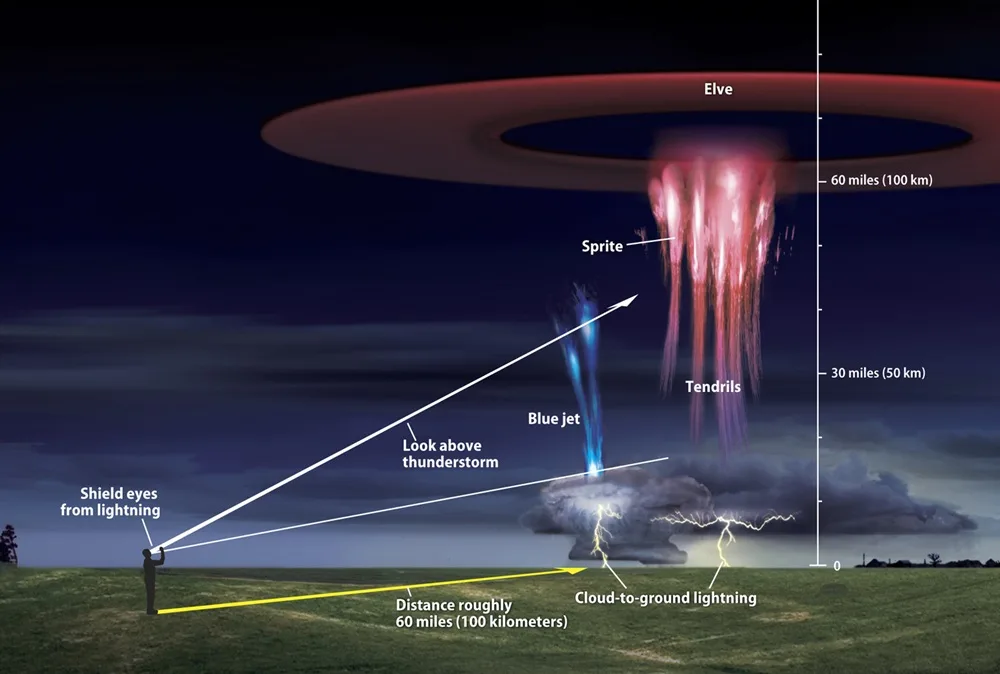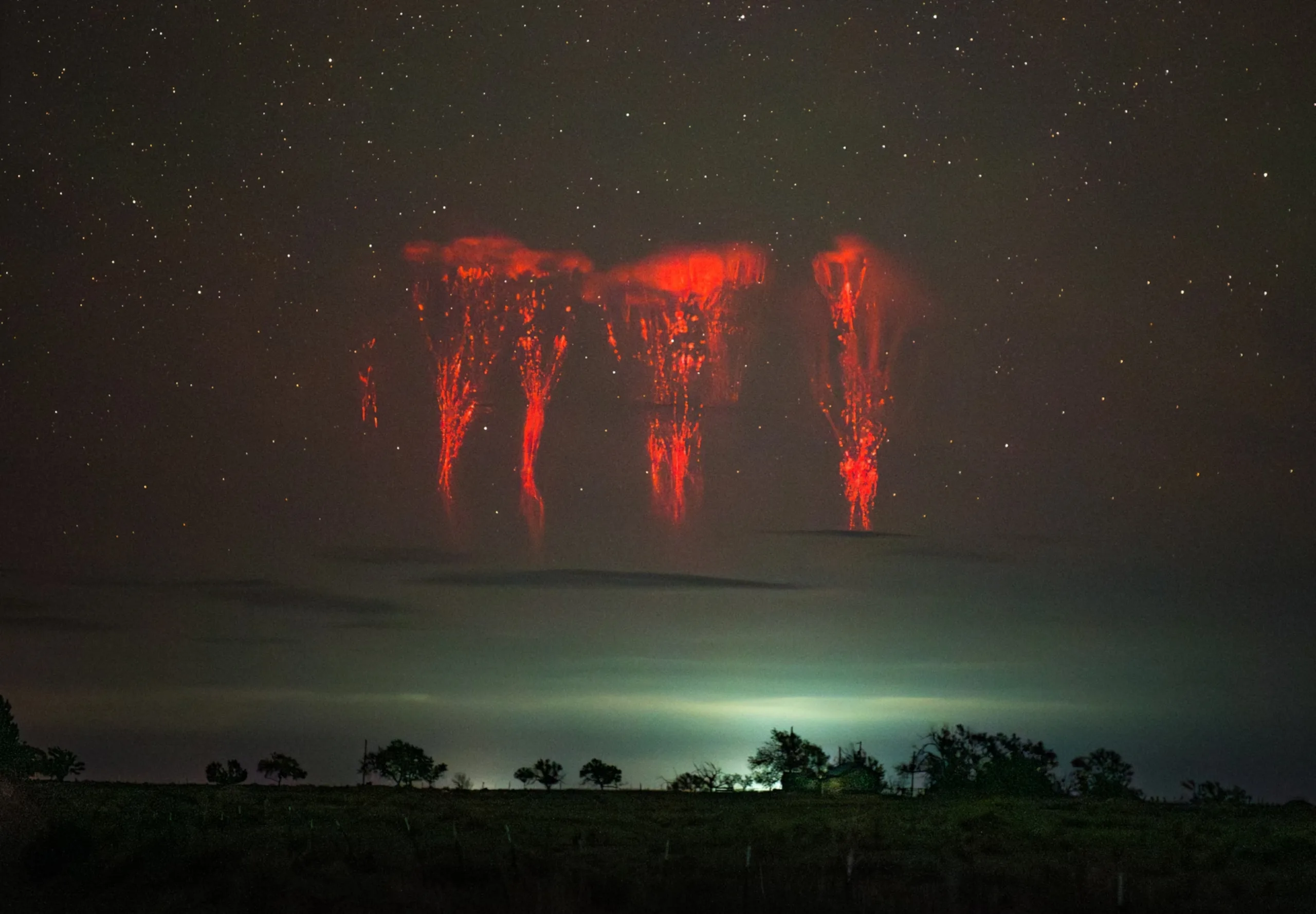Rabat – For most of us, lightning is the main act during a thunderstorm. But scientists and photographers are uncovering a secret world just above the clouds. These flashes are called Transient Luminous Events (TLEs), and they’re some of the most mysterious sights in the sky.

Sprites appear as red bursts shaped like jellyfish or carrots. Blue jets shoot upward like fountains. Elves spread as giant glowing rings, and ghosts leave a green shimmer. They happen so fast and faint that the naked eye often misses them, but cameras and satellites are finally capturing the show.
From accident to discovery
Sprites were first spotted in 1989 when researchers in Minnesota accidentally recorded them on video. For years, many dismissed the lights as mistakes or camera glitches. But once confirmed, they became one of the most exciting discoveries in atmospheric science. Today, storms across the world are known to create them, but catching them is still rare.
In 2022, a powerful storm over the Tibetan Plateau became a breakthrough moment. Cameras recorded 105 sprites in one night, the largest number ever seen in South Asia. Alongside them appeared elusive blue jets and shimmering Ghosts, giving scientists a detailed look at how active the upper atmosphere can be.
Watching from Earth and space
The search for TLEs isn’t limited to scientists. Amateur sky-watchers with sensitive cameras now play a big role in capturing them. NASA’s citizen science project, Spritacular, encourages people everywhere to share photos of sprites and jets. These contributions help scientists map when and where the lights appear.
Even Astronauts have joined in. From the International Space Station, astronaut Nichole “Vapor” Ayers recently photographed a bright red sprite above Earth. Her image offered rare data on how lightning energy stretches upward into space, linking Earth’s weather with the edge of our atmosphere.
Scientists still don’t fully understand how sprites form or why they take such strange shapes. Each new sighting adds another piece to the puzzle. Some researchers think studying them could even reveal how thunderstorms move energy into the upper atmosphere and affect our climate.
















